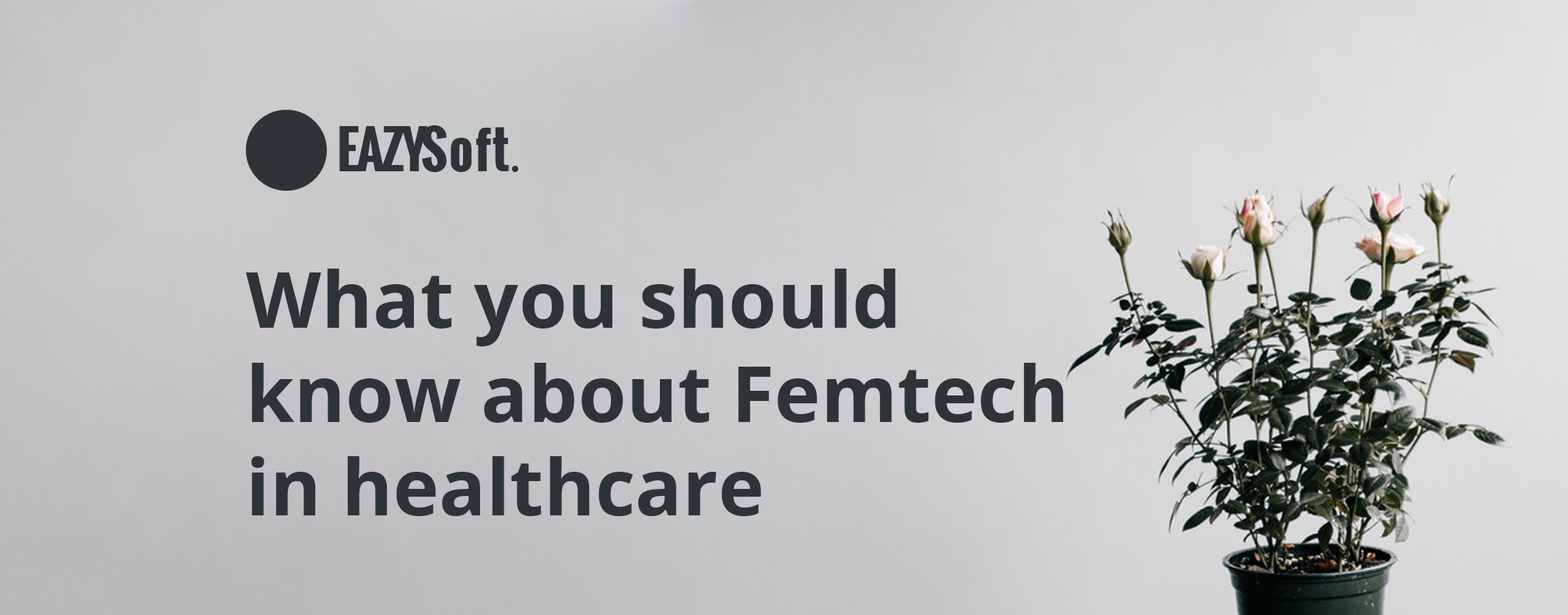
What you should know about Femtech in healthcare
The market is flooded with products tailored to the needs of men: viagra, penis enlargement pills, fitness apps, and more. But a new sector dedicated to women is emerging. Femtech, or female technology, is tickling the curiosity of hungry venture capitalists who are beginning to sniff an opportunity like bloodhounds. Those who think of femtech as a niche market should look at the data: It concerns 49.5 percent of the world’s population.
The femtech sector primarily addresses women’s health, including fertility solutions, period-tracking apps, pregnancy and nursing care, women’s sexual wellness, and reproductive system health care.
What is Femtech?
From prescription birth control apps and tampon alternatives to wearable fertility trackers and internet-connected breast pumps, women’s health tech made massive strides in 2016. All of these new products fall under the heading of FemTech (female technology) — a sector which primarily addresses women’s health, including fertility solutions, period-tracking apps, pregnancy and nursing care, women’s sexual wellness, and reproductive system health care.
In short, FemTech represents a notable departure from a market which saw all things male enhancement going mainstream while products aimed at addressing basic women’s health issues remained largely invisible.
Femtech emerged as a concept and movement in the past five years and has really gained traction in the past couple of years. One of its pioneers is Danish female entrepreneur Ida Tin, who created the period and ovulation tracker app Clue in 2013 and is widely credited with coining the term femtech.
Why is FemTech so important?
Femtech is set to be the next big disruptor in the global healthcare market. Femtech involves the use of digital health applications such as software, diagnostics, products, and services to improve women’s health. Continued engagement and self-management is core to managing women’s health issues. Personalized wellness and consumer healthcare technology has been a top-5 investment area in digital health for several years now, and Femtech in particular has benefited from this drive towards personalized care delivery.
There are several established healthcare companies and startups in this space which use disruptive technology including artificial intelligence, machine learning, big data, and the Internet of Things to develop interactive digital health applications for women’s health. For instance a recent study from Lehigh University, in Pennsylvania, used artificial intelligence for cervical screening and was proven to be several times more efficient than using Pap smear and HPV tests. The AI algorithm for recognizing cervical dysplasia removes the need for expensive equipment to run traditional tests. Currently, 80% of the incidence of cervical cancer is in developing countries where there are no national level screening programs and a Femtech application such as this will have the potential to make care accessible at affordable rates to millions of women at risk of cancer. Furthermore, there are several Femtech applications that work as a combination of a wearable or a medical device, with a mobile application. In this regard, technical advances such as sensor miniaturization and portability have also significantly contributed to the rise of Femtech.
3 Things To Know About New Industry
1. It Aims To Give Women More Control Over Their Health And Lives
Women can only fulfill their potential and their life purpose when they have some agency over their own body and their own childbearing. The goal of FemTech is to give women more control over their health, their happiness, and their futures. Knowledge is power, after all, and technology gives us knowledge.
2. It Can Help Health Problems Get Diagnosed And Treated Sooner
Between helping women understand their own bodies and adding to the greater scientific knowledge about the female body, FemTech can ultimately help those suffering from medical conditions. For example, endometriosis takes 10 years on average to diagnose. But if a woman can track her period symptoms with an app, it may be able to tell her that her periods are abnormal and she should go to a doctor. And when she’s at the doctor’s, she can accurately report what symptoms she’s been experiencing to receive a diagnosis and treatment faster.
3. It’s Helping Men Understand Women’s Health Issues
Unfortunately, the majority of the tech industry is still male, which can make it a struggle for women’s health startups to get funding and attention. However, when FemTech companies do succeed, they help men understand women’s health. When founder gives presentations to men, she’ll often show a graph of female hormonal changes throughout the month and then another showing how male hormones stay constant. At that point, the men begin to think, “Maybe I don’t fully understand it, but I understand there’s something I don’t understand,” she said.
One app has a feature that lets you share your cycle with someone else if you’d like, and the period-tracking app has a “partner sync” feature that tells your partner what you might like based on where you are in your cycle. These kinds of capabilities allow us all to value women’s health instead of viewing it as mysterious or irrelevant.
To sum up, though the benefits of Femtech are increasingly being recognized, there is a lack of visibility and communication about Femtech applications to women users and to the healthcare professionals who are key influencers. Insights into the drivers and motivating factors that increase usage, enhance patient perception, and encourage better engagement, will be critical for Femtech to reach its maximum potential.
